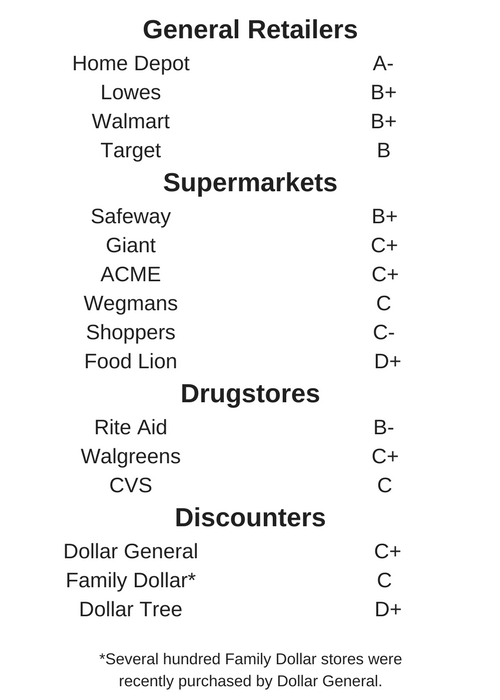Washington, D.C. –Today, the Consumer Federation of America (CFA) released the findings of research – a national poll of what consumers know about light bulb costs, and an assessment of the way national retailers display and provide information about low-cost LED light bulbs. These findings were included in a report – “The Potential for Consumer Cost Savings Through Retail Display of and Signage About LED Light Bulbs” – that reached the following conclusions:
- About half (51%) of consumers correctly identified LEDs as “the type of light bulb that lasts the longest and uses the least electricity.” (CFA’s June 2017 price survey showed that LEDs could lower consumer lighting costs by up to 80 percent.)
- This knowledge of LEDs was strongly correlated with LED usage. More than two-thirds (69%) of those consumers knowledgeable about low LED costs said they intended to replace burned-out bulbs with LEDs. About one-quarter (26%) of consumers without this knowledge said they would replace burned-out bulbs with LEDs. Accordingly, retailers can help their customers save money by providing information about the low cost of LEDs.
- Sixteen national retailers selling light bulbs – supermarkets, drugstores, discounters, and large general retailers – received grades ranging from “A-” (Home Depot) to “D+” (Food Lion and Dollar Tree) related to the prominence they gave and the information they provided about LEDs.
- Signage from Safeway and from Home Depot was especially informative about lower LED costs.
All Safeway stores surveyed had a two-part sign over light bulb bays, with one side containing information about annual cost and indicating that incandescent is “good,” halogen is “better,” and LED is “best” – and the other side stating – “Benefits of LED lighting. Long lifespan. Energy saving. Always ready. No mercury – instant full brightness.” Two (of four) Home Depot stores exhibited a sign reading: “Look for ENERGY STAR certified LED bulbs. They use less energy, save money, and help protect the environment.” Three Home Depot stores had an end-of-aisle sign reading: “Get the look of a traditional light bulb with the long life and energy of a LED.”
“National retailers differ considerably in the extent to which they help their customers save money on light bulbs,” said Mel Hall-Crawford, CFA’s Director of Energy Programs. “We urge all those retailers with lower grades to make a greater effort to prominently display LEDs and provide informative signage,” she added. Marketing research shows that display and signage have significant effects on customer buying decisions for items such as light bulbs.
CFA visited 52 stores in five states and the District of Columbia to research light bulb availability, display, and signage by 16 national retailers. Almost all stores for each retailer had similar displays and signage in the stores visited.
Large general retailers – Home Depot, Lowes, Walmart, and Target – received the highest grades, while discounters such as Family Dollar and Dollar Tree received the lowest grades. Supermarket grades ranged from “B+” (Safeway) to “D+” (Food Lion).

“Display and signage are essential to helping many consumers understand and realize the cost savings of LED light bulbs,” said Stephen Brobeck, CFA’s Executive Director. “Through prominent display and informative signage, some retailers are facilitating light bulb purchases that save consumers hundreds of dollars in several years,” he added.
The importance of this display and signage was revealed by a national survey of a representative sample of 1,000 American adults through landlines and cell phones, September 28-October 1, 2017. The survey was undertaken for CFA by ORC International and has a margin of error of plus or minus three percentage points.
In addition to revealing that only 51 percent of respondents understood the cost benefits of LEDs and that these consumers were far more likely to purchase LEDs than the remaining 49 percent, the survey showed that:
- Only 30 percent of respondents said they know a good or great deal (4 or 5 on a 5-point scale) about the differences among different types of light bulbs.
- Only 34 percent said that LEDs were the main type of light bulb in their living room or bedroom.
- Nearly half (48%) said they would replace burned-out bulbs with LEDs.
- Those with the lowest incomes (under $35,000/year) were least likely to replace burned-out bulbs with LEDs (only 43%).
“Discount stores, drugstores, and many supermarkets can do much more to help their customers save money,” noted CFA’s Brobeck. “They should display LEDs prominently and use signage to inform customers of their lower cost,” he added.
“Mainly because of the greater amount of electricity used by incandescent and halogen light bulbs, consumers can save over $100 a year on their energy bills by using more energy efficient LED light bulbs,” said CFA’s Hall-Crawford. “Moreover, LED bulbs now look basically the same and provide the same quality of light as the more traditional bulbs,” she added.
Contact: Stephen Brobeck, 202-939-1007; Mel Hall-Crawford, 805-245-0523
The Consumer Federation of America is an association of more than 250 non-profit consumer and cooperative groups that was founded in 1968 to advance the consumer interest through research, advocacy, and education.

